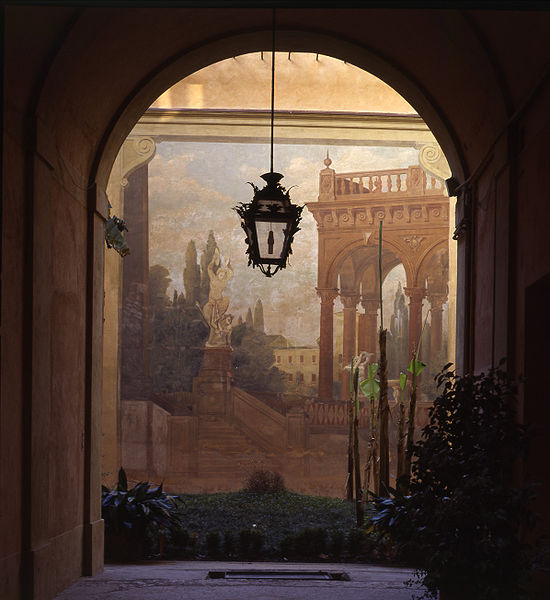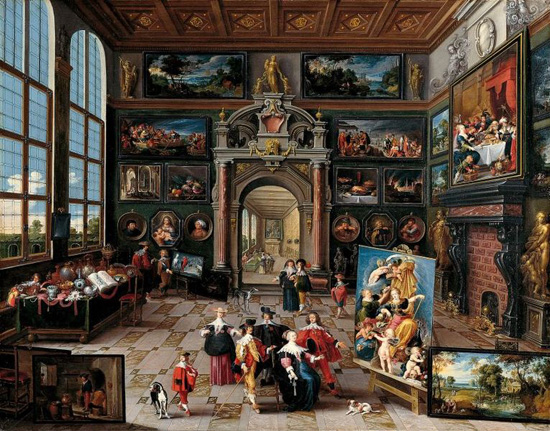'Mona Lisa'

Trompe l'œil means a trick of the eye - art that deceives the eye - and it became popular from the 15th century. Leonardo is not really associated with it in any formal sense, aside from The Last Supper, but how else can we debate the Mona Lisa smile? People are fascinated by the idea that there might be hidden meaning here... Who is she and what is she smiling about? Is she a Sphinx?
The trick of the eye is that Leonardo's painting looks straight back at the viewer (as the St. John the Baptist painting does) and there is a trace of irony in that glance, and this unsettles those who think that art should not look back. They convince themselves there is something sinister there.

Not sinister but the infinite...
There is a concept that is the corrupter and destroyer of all others. I speak not of Evil, whose limited empire is that of ethics; I speak of the infinite.
- Jorge-Luis Borges.
Was Leonardo aware of this extraordinary Flemish painting of 1470?

Leonardo was fascinated by this sort of thing, what is unpaintable - astrapen, bronten, ceraunobolian.

Above: a conventional trompe l'oeil - the Museo della Musica in Bologna, Italy. Below, a subtler one: Holbein's The Ambassadors (1533):

The trick of the eye is the strange elliptical object in the foreground, which turns out to be an anamorphic (stretched) image of a skull - a puzzle set for the viewer. The skull was a traditional symbol in painting for human mortality in the 16th century - memento mori or vanitas - and you can see another example here.
There is a direct link here between Trompe l'œil and the "cabinets of curiosities" (wunderkammer in German and Italian) that began appearing in palaces during this era. Two notable early private "cabinets" (collections) belonged to Ferdinand II, Archduke of Austria at Ambras Castle in Innsbruck - here - and his nephew Rudolf II, the Holy Roman Emperor, in Vienna and Prague until 1612. Aside from collecting things, they hosted humans with deformities (and other conditions like extreme hairiness), when they were on tour through the capitals of Europe.
Before long the phenomenon of collecting had entered the world of painting, notably Las Meninas by Diego Velázquez in 1656 and the great Flemish masters of Antwerp, incorporating Trompe l'œil...

The Flemish painters of Antwerp were a veritable production line churning out hundreds of paintings with allegorical themes. Above is Jan Brueghel's the Elder's The Sense of Sight (1618). It is part of a wonderful series about the senses that he collaborated on with Rubens (most are in the Prado), but they did others that are similar.
Brueghel has a painting much like the one below but this one is a copy by a later Flemish painter and I have seen it attributed to both Frans Francken the Younger and Cornelis de Baellieur, both of whom trained in Antwerp.

One of the most fascinating things about cabinets of curiosities is that some of them became museums eventually or at least the most interesting collections within them - Ambras Castle, for example, but also the Ashmolean in London and the Kunstkamera in St. Petersburg.
